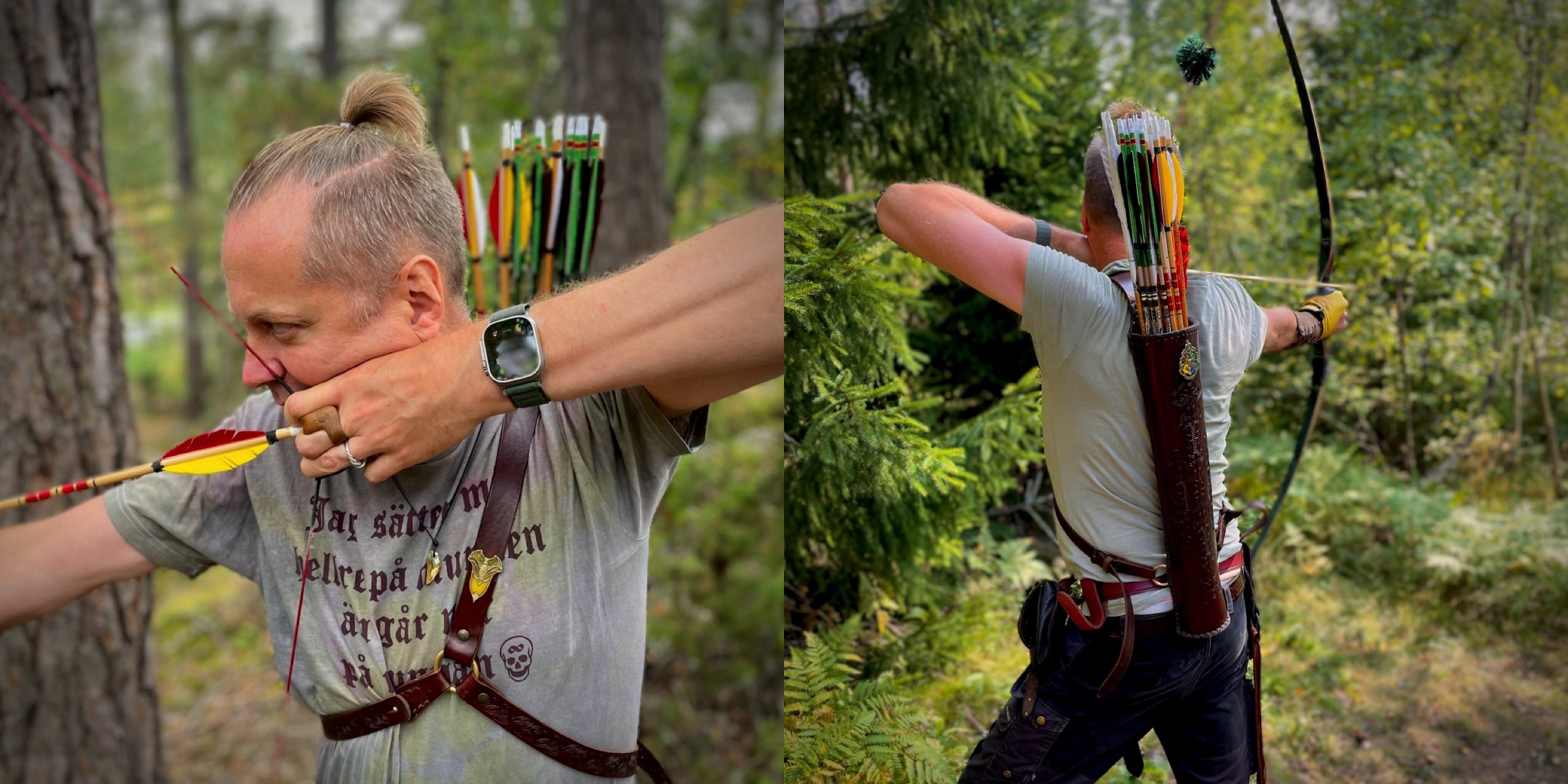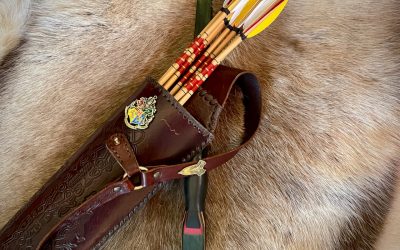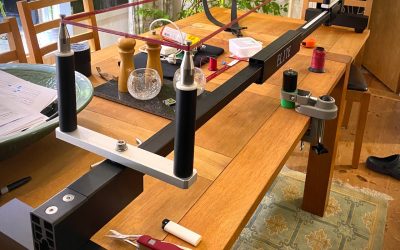Many archers struggle with consistency, blaming their gear, practice habits, or even the wind. But what if the true issue lies within their own form? What if the key to mastering your shot is not more strength or fancy equipment, but simply learning how to align your body with the bow? In the world of archery, there is an often-overlooked truth: alignment is everything.
Understanding Alignment: The Foundation of Good Form
Alignment is the positioning of the shoulders, arms, and back in a cohesive line during the shot. Imagine drawing an invisible line from your bow hand, through your shoulders, to your draw hand. When that line is straight and balanced, you’ve reached ideal alignment.
The Benefits of Proper Alignment:
- Engages the larger back muscles, reducing fatigue and increasing stability.
- Creates a repeatable shot process that feels “anchored” and balanced.
- Enhances confidence in your shot cycle by reinforcing proper structure.
The Risks of Poor Alignment:
- Over-reliance on the arms and shoulders, leading to early fatigue.
- A floating or weak anchor point that causes inconsistency.
- A tendency to collapse during the shot, where the draw hand drifts forward at release.
- An increased chance of injury to the rotator cuff or shoulders.
- Development of target panic as the mind tries to compensate for the instability by rushing the shot or fearing failure.
For tall archers with long draw lengths, poor alignment is even more detrimental because the forces exerted by the bow increase as the draw length extends. What may feel like a minor flaw for a shorter archer becomes magnified for someone with a longer reach.
The Role of Anchor Points: Finding the Perfect Reference
Anchor points act as reference markers for consistency. Common anchor points include the corner of the mouth, cheekbone, jawline, or under the chin. Each affects draw length and alignment in different ways.
A Personal Discovery
I’m very much still in “mid-training,” refining my technique and exploring what truly resonates with me as an archer. When I first adopted the Olympic-style under-the-chin anchor, I experienced genuine alignment for the very first time. It was a revelation. Coming from traditional archery, where my anchor point was at the corner of my mouth, I realised I’d likely never achieved proper alignment before. With this new technique, my back muscles engaged naturally, and I felt an unshakable sense of stability and control.
Yet, despite some success in Olympic-style recurve, something about it didn’t quite feel like me. After a time, I found myself drawn back to traditional archery—with my longbow and traditional recurve—where everything felt familiar, like coming home. Even so, I’ve taken what I’ve learned about alignment and incorporated it into my traditional shooting. Now, I’m experimenting with anchors and constantly refining my form, chasing that perfect feeling of precision. When it all clicks into place, the result is extraordinary—a shot so clean and true it feels almost effortless.
This realization made me reflect on how different anchor points influence an archer’s shot and how finding the right anchor point is highly personal—it can either unlock your potential or create hidden challenges.
How the Anchor Point Impacts Alignment:
- Side-of-the-mouth anchor: Shortens the draw length and, while it can work well for some archers, may cause the back to work asymmetrically, potentially leading to weaker engagement for others.
- Under-the-chin anchor: Lengthens the draw and aligns the draw hand with the dominant eye, encouraging full back engagement.
- Jawline or cheekbone anchor: Can offer a middle ground, especially for archers who prefer a more instinctive style but still want to maintain good alignment.
Bow Design and the Struggle of Long Draws
The bow’s length and limb design significantly impact how it feels at full draw.
The Challenge of Stacking
Stacking occurs when the bow’s draw weight increases disproportionately at a certain point in the draw cycle, making the draw feel exponentially heavier. For long-limbed archers:
- Shorter bows with shorter working limbs stack earlier, often before the archer reaches full alignment.
- When the bow “protests,” it can cause the archer to shorten their draw length or collapse their form to avoid the resistance.
In contrast, shorter archers never experience this struggle, as they remain comfortably within the bow’s smooth draw range.
Solutions for Long-Draw Archers:
- Opt for longer bows (66 inches or more) to delay stacking.
- Consider custom-built bows designed for long draw lengths.
- Experiment with hybrid longbows and recurves that blend traditional aesthetics with smoother limb geometry.
Thumb Draw and the Pursuit of Symmetry
The thumb draw, used in Asiatic and historical archery styles, represents an approach that maximizes the back’s full potential.
Key Features of the Thumb Draw:
- The draw hand often anchors near or behind the jawline, encouraging full engagement of the back.
- The motion follows the natural rotation of the torso, creating a balanced distribution of tension.
- The grip, where the thumb holds the string and the fingers support it, keeps the wrist neutral and reduces twisting.
In contrast, the Mediterranean draw with a side-of-the-mouth anchor tends to create asymmetrical tension, as the draw-side scapula must work harder to achieve alignment while the bow-side shoulder resists.
Historical Wisdom
Archery texts from Persia and Mongolia describe the bow as an extension of the body, with an emphasis on fluid, natural motion rather than forced mechanical precision. These cultures emphasized full-body coordination, which contrasts with modern techniques that often compartmentalize form into individual steps and promote a ‘one-size-fits-all’ approach to technique, even though it may not suit every archer’s body type.
The Modern Obsession with Mechanical Precision
Modern archery, particularly Olympic-style shooting, demands incredible precision. Olympic archers are capable of remarkable feats of accuracy, often shooting tight groupings at 70 meters with barely a millimeter’s margin of error. This precision comes from meticulous technique, honed through consistent form and alignment.
To achieve this, training focuses on deliberate, step-by-step scapula engagement and a highly structured shot process. This creates consistency but can sometimes feel mechanical or forced. Archers are often taught a ‘universal’ method intended to suit all body types, which may not be optimal for everyone.
However, it’s important to recognize that this structure is what allows Olympic archers to reach such incredible levels of precision. Yet, it also raises the question of whether this approach is always suitable for archers who shoot instinctively or with traditional methods.
By contrast, thumb draw and other traditional techniques encourage the body to “find” its alignment more naturally. Instead of rigidly positioning each part of the shot, these methods allow the back and shoulders to move fluidly, emphasizing natural coordination over compartmentalized form.
This invites an important reflection: Is it time to rethink how we approach alignment in traditional archery, finding a balance between precision and natural movement?
Finding Your Own Alignment: Practical Tips
To discover your ideal alignment, consider these approaches:
- Mirror and Video Feedback: Record yourself shooting and check for alignment flaws. Are your shoulders level? Is your draw elbow in line with the arrow?
- Anchor Exploration: Experiment with different anchor points, such as the cheekbone, jawline, or under the chin, to see which one provides the best back engagement.
- T-Shape Drills: Stand in a “T” position with arms outstretched and practice engaging your back muscles without a bow to feel the natural motion.
- Thumb-Draw Practice: Try shooting a few arrows with a thumb draw to experience the feeling of natural, symmetrical back tension.
Archery in Balance
Alignment isn’t about forcing your body into a rigid position—it’s about finding the point where your form, body type, and bow work together in harmony. My journey through different anchor points and draw styles taught me that there is no universal method for perfect alignment; there is only the method that fits you.
By learning to listen to your body, maybe experimenting with historical techniques, and trusting what feels secure and stable, you can build a form that is truly balanced. While modern Olympic archery has achieved unparalleled precision in just a few decades, historical methods have stood the test of thousands of years—each approach offering lessons worth exploring.
Your body already knows what perfect alignment feels like—it’s up to you to let it guide your shot.






0 Comments